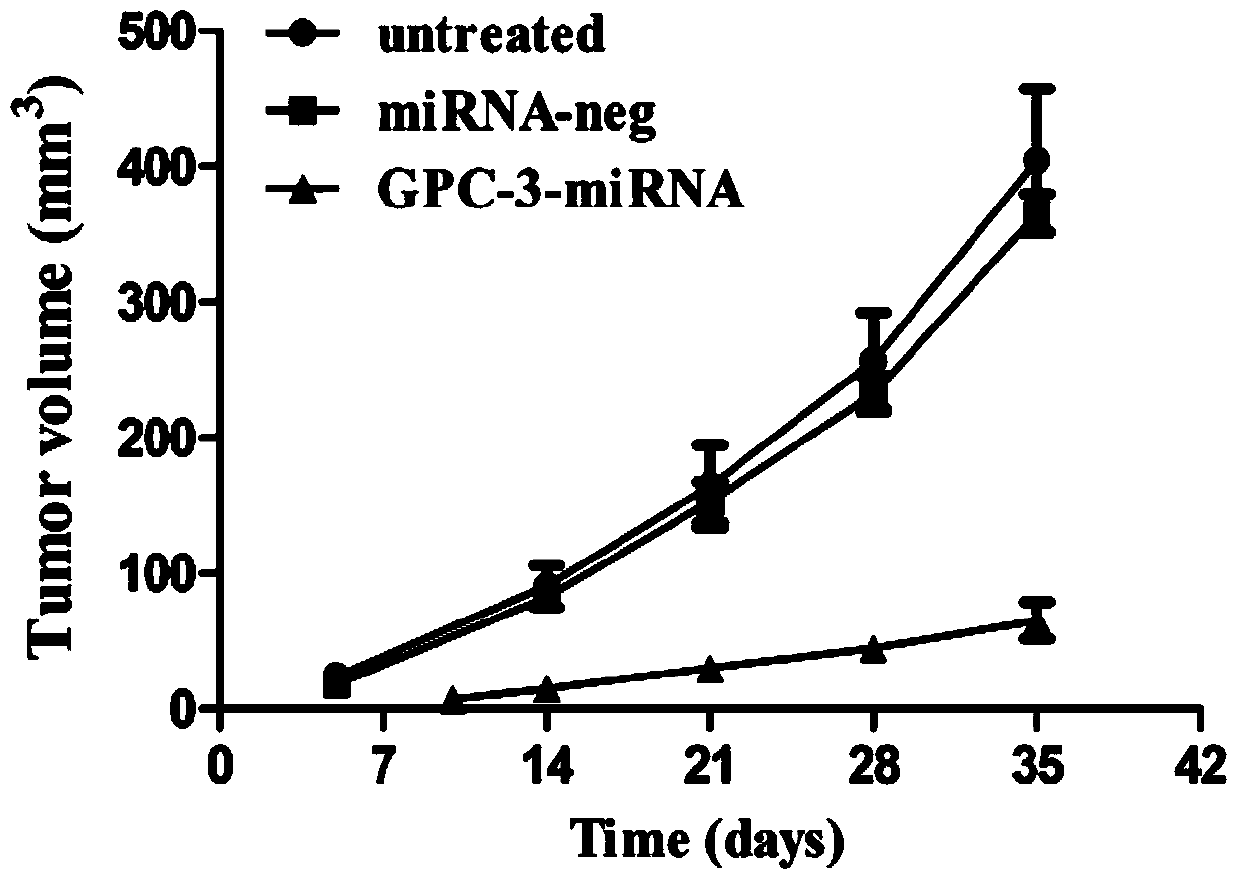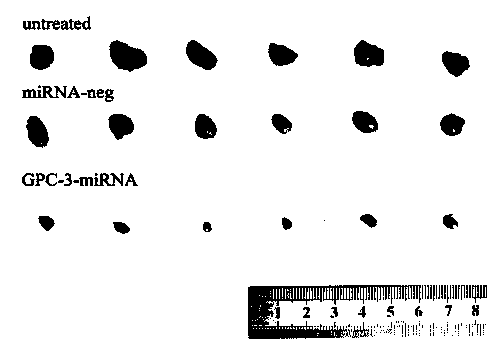Method for detecting inhibiting ability of silent GPC-3 gene transcription on hepatocellular carcinoma transplanted tumor in nude mouse
A technology for gene transcription and inhibition of liver cancer, applied in the field of GPC-3 related gene technology, can solve the problems of no simple and efficient method for liver cancer nude mice transplantation, and the verification of liver cancer nude mice is not easy enough.
- Summary
- Abstract
- Description
- Claims
- Application Information
AI Technical Summary
Problems solved by technology
Method used
Image
Examples
Embodiment
[0052] 1.1 Preparation of materials:
[0053]Human HepG2 cell line was purchased from Shanghai Institute of Cells, Chinese Academy of Sciences; fetal bovine serum, trypsin solution and phosphate buffer saline (PBS) were purchased from Invitrogen Company of the United States; dimethyl sulfoxide and blasticidin were purchased from Sigma Company of the United States; GenJetTM DNA In Vitro Transfection Reagent was purchased from SignaGen Company of the United States; mouse anti-human GPC-3 antibody was purchased from Abcam Company of the United States; β-catenin, p-GSK3β, cyclinD1 and β-actin rabbit anti-human antibodies were purchased from CST Company of the United States; Oxidase-labeled goat anti-rabbit and goat anti-mouse IgG antibodies were purchased from Everest Biotech, UK.
[0054] 1.2 Preparation of experimental animals:
[0055] Eighteen BALB / c nude mice (provided by the Experimental Animal Center of Nantong University), aged 4-6 weeks, weighing 18-20g, male and female,...
PUM
| Property | Measurement | Unit |
|---|---|---|
| diameter | aaaaa | aaaaa |
Abstract
Description
Claims
Application Information
 Login to View More
Login to View More - R&D
- Intellectual Property
- Life Sciences
- Materials
- Tech Scout
- Unparalleled Data Quality
- Higher Quality Content
- 60% Fewer Hallucinations
Browse by: Latest US Patents, China's latest patents, Technical Efficacy Thesaurus, Application Domain, Technology Topic, Popular Technical Reports.
© 2025 PatSnap. All rights reserved.Legal|Privacy policy|Modern Slavery Act Transparency Statement|Sitemap|About US| Contact US: help@patsnap.com



